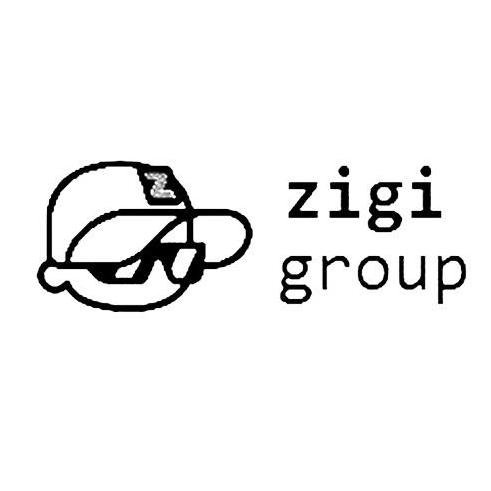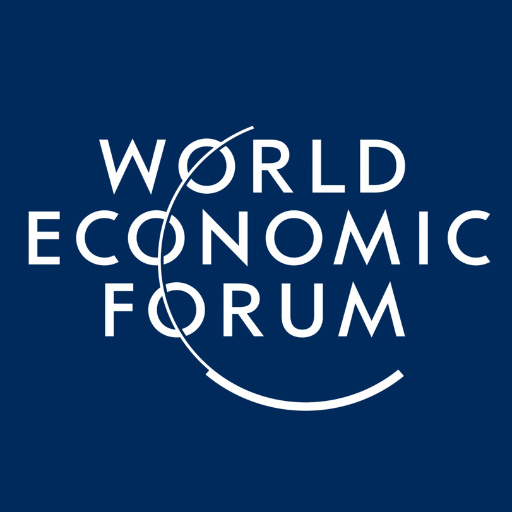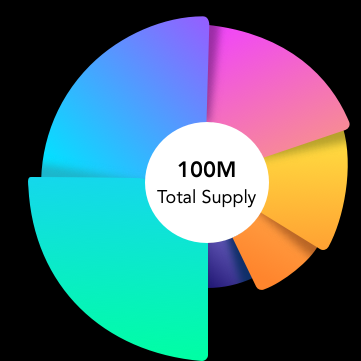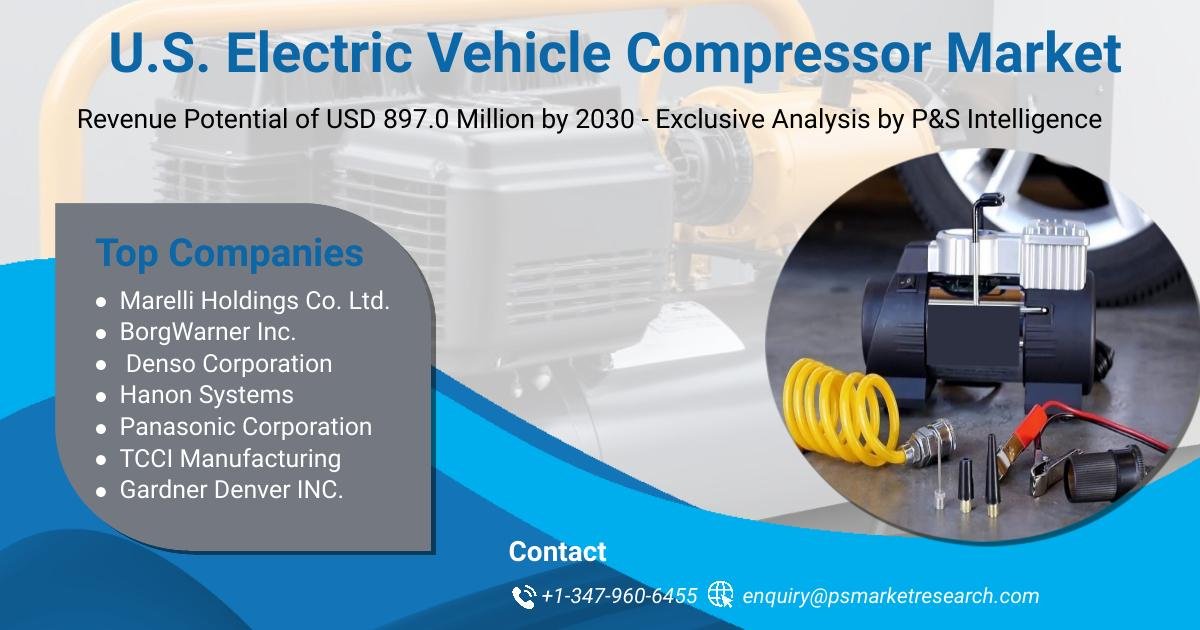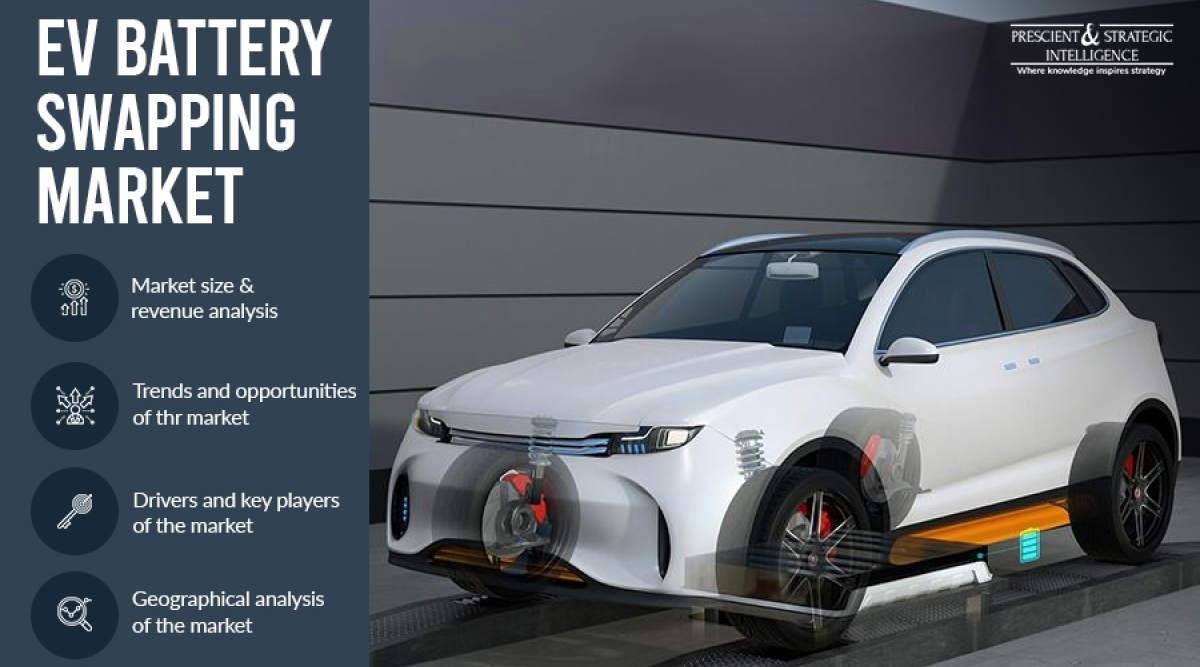- Male
- 14/08/1980
- Followed by 2 people
Friends 11
Recent Updates
- Electrifying Growth: U.S. EV Compressor Market to Reach $897 Million by 2030
As the automotive industry undergoes its most significant transformation in a century, the components that power the electric vehicle revolution are experiencing unprecedented growth. A critical yet often overlooked element in this transition is the electric vehicle compressor—an essential component that manages thermal systems in EVs quite differently than in traditional combustion vehicles. Recent market analysis reveals remarkable expansion in this specialized sector: the U.S. electric vehicle compressor market, valued at USD 344.6 million in 2024, is projected to reach USD 897.0 million by 2030, advancing at an impressive compound annual growth rate (CAGR) of 17.3% during this period.
U.S. Electric Vehicle Compressor Market Size & Share Analysis - https://www.psmarketresearch.com/market-analysis/us-ev-compressor-market
The Current Landscape
The $344.6 million valuation in 2024 represents the early stages of what promises to be exponential growth as EV adoption accelerates. Unlike conventional vehicles that use belt-driven compressors powered by the engine, electric vehicles require electrically driven compressors for their heating, ventilation, and air conditioning (HVAC) systems, as well as for battery thermal management.
Today's EV compressor market features automotive tier-one suppliers adapting their expertise to electric mobility requirements, alongside newer entrants specializing exclusively in EV-specific thermal management. These systems must optimize for energy efficiency, reduced noise, precise temperature control, and integration with complex vehicle management systems—all while meeting stringent reliability standards for automotive applications.
Driving Forces Behind 17.3% Annual Growth
Several powerful factors are propelling the projected growth through 2030:
EV adoption acceleration: Government incentives, expanding model availability, and improving charging infrastructure are driving faster-than-expected consumer transition to electric vehicles, creating corresponding demand for specialized components.
Battery performance optimization: As manufacturers recognize that battery longevity and performance depend heavily on optimal thermal management, investment in advanced compressor systems has increased to maintain battery cells within ideal temperature ranges.
Range anxiety solutions: With driving range remaining a primary consumer concern, efficient compressors that minimize battery power consumption for climate control have become a critical competitive differentiator for vehicle manufacturers.
Regulatory requirements: Increasingly stringent efficiency and environmental regulations favor electric compressors, which offer more precise control and eliminate refrigerant leakage risks associated with belt-driven mechanical systems.
Heat pump technology integration: The shift toward heat pump systems for more efficient cabin heating in cold weather is driving demand for specialized compressors that can operate efficiently across wider temperature ranges.
Electrifying Growth: U.S. EV Compressor Market to Reach $897 Million by 2030 As the automotive industry undergoes its most significant transformation in a century, the components that power the electric vehicle revolution are experiencing unprecedented growth. A critical yet often overlooked element in this transition is the electric vehicle compressor—an essential component that manages thermal systems in EVs quite differently than in traditional combustion vehicles. Recent market analysis reveals remarkable expansion in this specialized sector: the U.S. electric vehicle compressor market, valued at USD 344.6 million in 2024, is projected to reach USD 897.0 million by 2030, advancing at an impressive compound annual growth rate (CAGR) of 17.3% during this period. U.S. Electric Vehicle Compressor Market Size & Share Analysis - https://www.psmarketresearch.com/market-analysis/us-ev-compressor-market The Current Landscape The $344.6 million valuation in 2024 represents the early stages of what promises to be exponential growth as EV adoption accelerates. Unlike conventional vehicles that use belt-driven compressors powered by the engine, electric vehicles require electrically driven compressors for their heating, ventilation, and air conditioning (HVAC) systems, as well as for battery thermal management. Today's EV compressor market features automotive tier-one suppliers adapting their expertise to electric mobility requirements, alongside newer entrants specializing exclusively in EV-specific thermal management. These systems must optimize for energy efficiency, reduced noise, precise temperature control, and integration with complex vehicle management systems—all while meeting stringent reliability standards for automotive applications. Driving Forces Behind 17.3% Annual Growth Several powerful factors are propelling the projected growth through 2030: EV adoption acceleration: Government incentives, expanding model availability, and improving charging infrastructure are driving faster-than-expected consumer transition to electric vehicles, creating corresponding demand for specialized components. Battery performance optimization: As manufacturers recognize that battery longevity and performance depend heavily on optimal thermal management, investment in advanced compressor systems has increased to maintain battery cells within ideal temperature ranges. Range anxiety solutions: With driving range remaining a primary consumer concern, efficient compressors that minimize battery power consumption for climate control have become a critical competitive differentiator for vehicle manufacturers. Regulatory requirements: Increasingly stringent efficiency and environmental regulations favor electric compressors, which offer more precise control and eliminate refrigerant leakage risks associated with belt-driven mechanical systems. Heat pump technology integration: The shift toward heat pump systems for more efficient cabin heating in cold weather is driving demand for specialized compressors that can operate efficiently across wider temperature ranges.0 Comments 0 Shares - Polymethyl Methacrylate Market Will Touch USD 8,946.1 Million in 2030
The polymethyl methacrylate market was USD 6,185.2 million in 2023, and it will touch USD 8,946.1 million, with a 5.5% compound annual growth rate, by 2030.
Explore more about this report@ https://www.psmarketresearch.com/market-analysis/polymethyl-methacrylate-pmma-market
This is because of the increasing utilization of PMMA across different sectors, including construction, signs & displays, electronics, and automotive, beneficial government policies, and the growing need for lightweight materials across verticals.
In 2023, the extruded sheets category, based on type, accounted for the largest share, and it is likely to remain the largest in the years to come.
This can be because of the wide use of these sheets in the automotive industry to make visors, windshields, and many other exterior and interior parts. This is because such materials offer many benefits like easy fabrication, weather resistance, cost-efficiency, and optical clarity.
The construction category, based on application, was the largest contributor to the polymethyl methacrylate market in 2023, with a 31.4% share, and it will remain the largest throughout this decade. This can be because of the quickly surging populace in urban areas, the growing trend of green building materials, increasing investment in the residential sector, and the rising standard of living.
The automotive category will observe the fastest CAGR in the coming years. This is because of the increasing need for new-generation automobiles, particularly EVs; rising findings by automotive companies in expanding their manufacturing output, and surging requirements to produce highly fuel-efficient and lightweight vehicles.
North America was a significant contributor to the industry in 2023. This can be mainly because of the enhanced healthcare infrastructure, rising construction rate, and surging adoption of signs and displays in this continent.
It is because of the advancing automotive sector, coupled with mounting EVs************, the polymethyl methacrylate industry will continue to grow significantly in the years to come.
Polymethyl Methacrylate Market Will Touch USD 8,946.1 Million in 2030 The polymethyl methacrylate market was USD 6,185.2 million in 2023, and it will touch USD 8,946.1 million, with a 5.5% compound annual growth rate, by 2030. Explore more about this report@ https://www.psmarketresearch.com/market-analysis/polymethyl-methacrylate-pmma-market This is because of the increasing utilization of PMMA across different sectors, including construction, signs & displays, electronics, and automotive, beneficial government policies, and the growing need for lightweight materials across verticals. In 2023, the extruded sheets category, based on type, accounted for the largest share, and it is likely to remain the largest in the years to come. This can be because of the wide use of these sheets in the automotive industry to make visors, windshields, and many other exterior and interior parts. This is because such materials offer many benefits like easy fabrication, weather resistance, cost-efficiency, and optical clarity. The construction category, based on application, was the largest contributor to the polymethyl methacrylate market in 2023, with a 31.4% share, and it will remain the largest throughout this decade. This can be because of the quickly surging populace in urban areas, the growing trend of green building materials, increasing investment in the residential sector, and the rising standard of living. The automotive category will observe the fastest CAGR in the coming years. This is because of the increasing need for new-generation automobiles, particularly EVs; rising findings by automotive companies in expanding their manufacturing output, and surging requirements to produce highly fuel-efficient and lightweight vehicles. North America was a significant contributor to the industry in 2023. This can be mainly because of the enhanced healthcare infrastructure, rising construction rate, and surging adoption of signs and displays in this continent. It is because of the advancing automotive sector, coupled with mounting EVs penetration, the polymethyl methacrylate industry will continue to grow significantly in the years to come.0 Comments 0 Shares - North America Is Dominating Iron Flow Batteries Market
Iron Flow Batteries Market Size and Share Analysis@ https://www.psmarketresearch.com/market-analysis/iron-flow-batteries-market-report
The iron flow batteries market is projected to achieve a revenue of USD 26.9 million by the conclusion of 2023. Anticipated to experience a Compound Annual Growth Rate (CAGR) of 29.5% from 2024 to 2030, it is predicted to reach a total revenue of USD 163.5 million by the year 2030.
This development of the industry can be ascribed to the increasing need for power, the addition of renewable power sources, like wind and solar; government backing for rural electrification, the long-life cycle and security advantages of such energy storage devices, and rising research and development activities.
One of the key factors behind the industry development is the ability of such systems to bear thousands of charge and discharge cycles with insignificant degradation. This offers a lucrative power storage solution for both short-term and also long-term applications. It also removes the requirement for maintenance and regular replacements, which is a vital step in decreasing the price of possession.
Data centers play a crucial role in storing, processing, and overseeing substantial volumes of data produced by individuals and businesses. The widespread use of data-intensive applications like big data analytics, artificial intelligence, and cloud computing highlights the essential nature of data centers in the global infrastructure.
Geographically, the North American region is going to lead the industry and showcase a growth rate of 50% during the projection period. This development can be credited to the rising chemical, oil & gas, and power generation industries. Additionally, the major players are focused on the North American region, and they are introducing new items and increasing their customer bases.
The APAC market is projected to experience the highest Compound Annual Growth Rate (CAGR) of 30.4% between 2024 and 2030. This can be attributed to the cost-effective availability of labor and raw materials, establishing the region as a crucial center for manufacturing industries. Additionally, substantial investments in renewable energy projects by regional countries are contributing to the overall growth and success of the industry.
North America Is Dominating Iron Flow Batteries Market Iron Flow Batteries Market Size and Share Analysis@ https://www.psmarketresearch.com/market-analysis/iron-flow-batteries-market-report The iron flow batteries market is projected to achieve a revenue of USD 26.9 million by the conclusion of 2023. Anticipated to experience a Compound Annual Growth Rate (CAGR) of 29.5% from 2024 to 2030, it is predicted to reach a total revenue of USD 163.5 million by the year 2030. This development of the industry can be ascribed to the increasing need for power, the addition of renewable power sources, like wind and solar; government backing for rural electrification, the long-life cycle and security advantages of such energy storage devices, and rising research and development activities. One of the key factors behind the industry development is the ability of such systems to bear thousands of charge and discharge cycles with insignificant degradation. This offers a lucrative power storage solution for both short-term and also long-term applications. It also removes the requirement for maintenance and regular replacements, which is a vital step in decreasing the price of possession. Data centers play a crucial role in storing, processing, and overseeing substantial volumes of data produced by individuals and businesses. The widespread use of data-intensive applications like big data analytics, artificial intelligence, and cloud computing highlights the essential nature of data centers in the global infrastructure. Geographically, the North American region is going to lead the industry and showcase a growth rate of 50% during the projection period. This development can be credited to the rising chemical, oil & gas, and power generation industries. Additionally, the major players are focused on the North American region, and they are introducing new items and increasing their customer bases. The APAC market is projected to experience the highest Compound Annual Growth Rate (CAGR) of 30.4% between 2024 and 2030. This can be attributed to the cost-effective availability of labor and raw materials, establishing the region as a crucial center for manufacturing industries. Additionally, substantial investments in renewable energy projects by regional countries are contributing to the overall growth and success of the industry.0 Comments 0 Shares - North America Is Dominating the Molten Salt Batteries Market
Molten Salt Batteries Market Size and Share Analysis Report@ https://www.psmarketresearch.com/market-analysis/molten-salt-batteries-market-report
The molten salt batteries market is projected to witness significant growth, with an estimated size of USD 2,461.1 million in 2023. Anticipated to experience a remarkable Compound Annual Growth Rate (CAGR) of 24.9% from 2024 to 2030, the market is forecasted to reach a substantial value of USD 11,543.2 million by the end of 2030.
The development of the market can be mainly credited to the growing need for storing energy efficiently, specifically that produced by renewable sources. Such batteries provide a huge count of advantages, which comprise improved safety, advanced energy densities, and lengthier lives.
The industry is basically booming due to the increasing emphasis on dependable and sustainable energy sources. For large-scale applications, batteries that consist of liquid components are utilized as they own an advanced current density and lengthier life. Thus, grid storage and electric cars are some potential uses for the molten salt battery.
Liquid-metal batteries dominate the market with a 30% share, primarily due to their suitability for grid-level energy storage and high scalability. These batteries can be expanded in size without compromising efficiency, and their safety profile is enhanced, minimizing the risk of thermal explosions resulting from internal chemical reactions.
Additionally, the use of cost-effective materials contributes to lower manufacturing and purchase costs. Other advantages include a low self-discharge rate and an extended cycle life.
In recent years, the North American region dominated the industry, and the region is also projected to continue with the dominance during the projection period, with a value of approximately USD 5.2 billion.
This can be credited to the increasing demand for EVs. In North America, the U.S. grips the leading position, and it will advance with a CAGR of 25.0%. This is ascribed to the surging emphasis on renewable sources of power and the growing demand for such systems from the power and energy industry.
North America Is Dominating the Molten Salt Batteries Market Molten Salt Batteries Market Size and Share Analysis Report@ https://www.psmarketresearch.com/market-analysis/molten-salt-batteries-market-report The molten salt batteries market is projected to witness significant growth, with an estimated size of USD 2,461.1 million in 2023. Anticipated to experience a remarkable Compound Annual Growth Rate (CAGR) of 24.9% from 2024 to 2030, the market is forecasted to reach a substantial value of USD 11,543.2 million by the end of 2030. The development of the market can be mainly credited to the growing need for storing energy efficiently, specifically that produced by renewable sources. Such batteries provide a huge count of advantages, which comprise improved safety, advanced energy densities, and lengthier lives. The industry is basically booming due to the increasing emphasis on dependable and sustainable energy sources. For large-scale applications, batteries that consist of liquid components are utilized as they own an advanced current density and lengthier life. Thus, grid storage and electric cars are some potential uses for the molten salt battery. Liquid-metal batteries dominate the market with a 30% share, primarily due to their suitability for grid-level energy storage and high scalability. These batteries can be expanded in size without compromising efficiency, and their safety profile is enhanced, minimizing the risk of thermal explosions resulting from internal chemical reactions. Additionally, the use of cost-effective materials contributes to lower manufacturing and purchase costs. Other advantages include a low self-discharge rate and an extended cycle life. In recent years, the North American region dominated the industry, and the region is also projected to continue with the dominance during the projection period, with a value of approximately USD 5.2 billion. This can be credited to the increasing demand for EVs. In North America, the U.S. grips the leading position, and it will advance with a CAGR of 25.0%. This is ascribed to the surging emphasis on renewable sources of power and the growing demand for such systems from the power and energy industry.0 Comments 0 Shares - Battery swapping for electric vehicles (EVs) is a process that allows an EV's exhausted battery or battery pack to be instantly exchanged for a fully charged one, removing the need to wait for the vehicle's battery to recharge.
With each battery switch taking below 10 minutes and requiring significantly less installation area than charging stations, battery swapping stations provide a more expedient solution to the problem of range anxiety.
Electric Vehicle Battery Swapping Market Research Report@ https://www.psmarketresearch.com/market-analysis/ev-battery-swapping-market
The global electric vehicle battery swapping market will grow with a robust CAGR in the coming years. The growing pollution levels in many nations are contributing to the popularity of electric vehicles. Additionally, the broad adoption of EVs depends on the availability of adequate charging infrastructure.
Why EV Battery Swapping Stations Are in Demand?
The worry about EVs' short range is lessened by the accessibility of such infrastructure. As it does away with the necessity for slow-charging facilities, battery swapping technology is a practical solution for powering automobiles in this regard.
As EVs become more popular over time, their efficiency and environmental friendliness have improved. Additionally, increasing customer demand for vehicles with the highest fuel economy and lowest operating costs has resulted in constant technological breakthroughs in EVs.
With the advent of swappable batteries, the driver may switch out a drained battery for a charged one at a special swap station. This finally propels the EV sector toward profitability by significantly increasing the vehicle's uptime and lowering operating expenses.
Additionally, some of the elements influencing the situation favorably include the growth of the EV charging infrastructure, which is supported by the deployment goals for charging and battery swapping stations, the adoption of laws, and the supply of financial help.
In essence, the growing number of EV sales is fueling a need for EV battery swapping stations, drawing significant investment. Aside from that, it is anticipated that declining battery costs and advancing technology would make it possible for manufacturers to sell EVs at competitive prices, boosting the need for battery swapping solutions.
Reduced Time for Electric Vehicle Charging
The growing need for rapid EV charging is the main reason behind the growth of the EV battery swapping industry. The acceptance of EVs, especially in long-haul applications, depends heavily on the charging time.
The majority of EVs employ slow charge systems, which can take approximately eight hours to recharge the battery at night. The battery changing procedure drastically cuts the battery charging time to under 3 minutes, extending the EV's operational range.
Battery swapping for electric vehicles (EVs) is a process that allows an EV's exhausted battery or battery pack to be instantly exchanged for a fully charged one, removing the need to wait for the vehicle's battery to recharge. With each battery switch taking below 10 minutes and requiring significantly less installation area than charging stations, battery swapping stations provide a more expedient solution to the problem of range anxiety. Electric Vehicle Battery Swapping Market Research Report@ https://www.psmarketresearch.com/market-analysis/ev-battery-swapping-market The global electric vehicle battery swapping market will grow with a robust CAGR in the coming years. The growing pollution levels in many nations are contributing to the popularity of electric vehicles. Additionally, the broad adoption of EVs depends on the availability of adequate charging infrastructure. Why EV Battery Swapping Stations Are in Demand? The worry about EVs' short range is lessened by the accessibility of such infrastructure. As it does away with the necessity for slow-charging facilities, battery swapping technology is a practical solution for powering automobiles in this regard. As EVs become more popular over time, their efficiency and environmental friendliness have improved. Additionally, increasing customer demand for vehicles with the highest fuel economy and lowest operating costs has resulted in constant technological breakthroughs in EVs. With the advent of swappable batteries, the driver may switch out a drained battery for a charged one at a special swap station. This finally propels the EV sector toward profitability by significantly increasing the vehicle's uptime and lowering operating expenses. Additionally, some of the elements influencing the situation favorably include the growth of the EV charging infrastructure, which is supported by the deployment goals for charging and battery swapping stations, the adoption of laws, and the supply of financial help. In essence, the growing number of EV sales is fueling a need for EV battery swapping stations, drawing significant investment. Aside from that, it is anticipated that declining battery costs and advancing technology would make it possible for manufacturers to sell EVs at competitive prices, boosting the need for battery swapping solutions. Reduced Time for Electric Vehicle Charging The growing need for rapid EV charging is the main reason behind the growth of the EV battery swapping industry. The acceptance of EVs, especially in long-haul applications, depends heavily on the charging time. The majority of EVs employ slow charge systems, which can take approximately eight hours to recharge the battery at night. The battery changing procedure drastically cuts the battery charging time to under 3 minutes, extending the EV's operational range.0 Comments 0 Shares - Boom Expected in Global Cathode Material for Automotive Lithium-Ion Battery Market in Future
The global cathode material for automotive lithium-ion battery market generated a revenue of $1,744.9 million in 2019 and is predicted to advance at a CAGR of 6.9% between 2020 and 2030. The market is expected to attain a valuation of $3,777.8 million by 2030. The growing usage of electric vehicles, rapid fall in the costs of cathode materials, and the growth of the energy storage battery industry are the key factors driving the advancement of the market.
Cathode Material for Automotive Lithium-Ion Battery Market Research Report@ https://www.psmarketresearch.com/market-analysis/cathode-material-automotive-lithium-ion-battery-market
With increasing environmental degradation and the deteriorating air quality levels in several countries, the deployment of electric vehicles is increasing rapidly. This is, in turn, pushing up the requirement for lithium-ion batteries, which is subsequently causing the expansion of the cathode material for automotive lithium-ion battery market. According to many reports, over 2.1 million electric cars were sold across the globe in 2019 and this number is predicted to rise beyond 130 million by 2030.
Nowadays, cathode material accounts for around 25–30% of the manufacturing cost of a lithium-ion battery. The original equipment manufacturers (OEMs) manufacturing cathode materials are focusing on developing these materials at more affordable prices. The availability of these materials at lower prices than before is boosting their sales, which is, in turn, fueling the growth of the cathode material for automotive lithium-ion battery market. The expanding energy storage battery industry is another major factor driving the progress of the market.
Depending on vehicle type, the market is classified into commercial vehicles, passenger cars, and two-wheelers. Amongst these, the passenger car category registered the highest growth in the market in the past years and this trend is predicted to continue in the coming years as well. This would be a result of the lucrative financial incentives being launched andprovided to end users and electric car manufacturing companies, especially in the U.S. and China, for promoting the deployment of electric cars.
When type is taken into consideration, the cathode material for automotive lithium-ion battery market is divided into lithium–ferrophosphate (LFP),lithium-ion–manganese oxide (LMO),lithium–titanate oxide (LTO),lithium–nickel–cobalt–manganese/lithium–nickel–manganese–cobalt (NMC), and lithium–nickel–cobalt–aluminum oxide (NCA). Out of these, the NCA category is predicted to exhibit the fastest growth in the market in the forthcoming years, on account of the fact that the NCA batteries have higher energy densities than the others.
Boom Expected in Global Cathode Material for Automotive Lithium-Ion Battery Market in Future The global cathode material for automotive lithium-ion battery market generated a revenue of $1,744.9 million in 2019 and is predicted to advance at a CAGR of 6.9% between 2020 and 2030. The market is expected to attain a valuation of $3,777.8 million by 2030. The growing usage of electric vehicles, rapid fall in the costs of cathode materials, and the growth of the energy storage battery industry are the key factors driving the advancement of the market. Cathode Material for Automotive Lithium-Ion Battery Market Research Report@ https://www.psmarketresearch.com/market-analysis/cathode-material-automotive-lithium-ion-battery-market With increasing environmental degradation and the deteriorating air quality levels in several countries, the deployment of electric vehicles is increasing rapidly. This is, in turn, pushing up the requirement for lithium-ion batteries, which is subsequently causing the expansion of the cathode material for automotive lithium-ion battery market. According to many reports, over 2.1 million electric cars were sold across the globe in 2019 and this number is predicted to rise beyond 130 million by 2030. Nowadays, cathode material accounts for around 25–30% of the manufacturing cost of a lithium-ion battery. The original equipment manufacturers (OEMs) manufacturing cathode materials are focusing on developing these materials at more affordable prices. The availability of these materials at lower prices than before is boosting their sales, which is, in turn, fueling the growth of the cathode material for automotive lithium-ion battery market. The expanding energy storage battery industry is another major factor driving the progress of the market. Depending on vehicle type, the market is classified into commercial vehicles, passenger cars, and two-wheelers. Amongst these, the passenger car category registered the highest growth in the market in the past years and this trend is predicted to continue in the coming years as well. This would be a result of the lucrative financial incentives being launched andprovided to end users and electric car manufacturing companies, especially in the U.S. and China, for promoting the deployment of electric cars. When type is taken into consideration, the cathode material for automotive lithium-ion battery market is divided into lithium–ferrophosphate (LFP),lithium-ion–manganese oxide (LMO),lithium–titanate oxide (LTO),lithium–nickel–cobalt–manganese/lithium–nickel–manganese–cobalt (NMC), and lithium–nickel–cobalt–aluminum oxide (NCA). Out of these, the NCA category is predicted to exhibit the fastest growth in the market in the forthcoming years, on account of the fact that the NCA batteries have higher energy densities than the others.0 Comments 0 Shares1 - How Will Antimicrobial Coatings Market Prosper in Future?
A number of factors such as the increasing public awareness regarding HAIs and the burgeoning need for improved air quality for HVAC systems will steer the antimicrobial coatings market growth between 2021 and 2030. Additionally, the surging concerns regarding hygiene and safety in the healthcare sector and the rising preference for antimicrobial coatings over powerful cleaning agents and disinfectants across the world will also boost the market growth in the coming years.
Industrial Enzymes Market Research Report@ https://www.psmarketresearch.com/market-analysis/industrial-enzymes-market
The rising prevalence of HAIs and growing awareness about HAIs will drive the demand for antimicrobial coatings, worldwide. According to the WHO, 7 out of 100 people in developed countries and 10 out of 100 people in developing countries acquire at least one HAI in hospitals. To prevent the deposition of viral, bacterial, and fungal particles, hospitals are replacing disinfectants and powerful cleaning agents with antimicrobial coatings, as the latter help curb the spread of germs.
Nowadays, R&D of different coating materials has become a prominent trend in the antimicrobial coatings market. At present, leading players are actively focusing on developing antimicrobial coatings to eliminate several microbes growing on different types of surfaces. For example, Nerolac Excel Virus Guard, an emulsion paint based on Japanese Shiquy Technology, reduces microbial growth on a wide range of surfaces. Additionally, the ongoing pandemic has also resulted in the large-scale development of advanced antimicrobial coatings.
According to P&S Intelligence, in 2020, the powder category, within the product segment, accounted for a larger share in the antimicrobial coatings industry. This was on account of the ability of powder antimicrobial coatings to change the properties of surface materials by introducing biological, physical, and chemical attributes. In addition, the less toxicity, high durability, and long-lasting characteristics of powder coatings, such as silver, copper, zinc-based compound, and quaternary ammonium compound, also contribute to the growth of the market in this category.
How Will Antimicrobial Coatings Market Prosper in Future? A number of factors such as the increasing public awareness regarding HAIs and the burgeoning need for improved air quality for HVAC systems will steer the antimicrobial coatings market growth between 2021 and 2030. Additionally, the surging concerns regarding hygiene and safety in the healthcare sector and the rising preference for antimicrobial coatings over powerful cleaning agents and disinfectants across the world will also boost the market growth in the coming years. Industrial Enzymes Market Research Report@ https://www.psmarketresearch.com/market-analysis/industrial-enzymes-market The rising prevalence of HAIs and growing awareness about HAIs will drive the demand for antimicrobial coatings, worldwide. According to the WHO, 7 out of 100 people in developed countries and 10 out of 100 people in developing countries acquire at least one HAI in hospitals. To prevent the deposition of viral, bacterial, and fungal particles, hospitals are replacing disinfectants and powerful cleaning agents with antimicrobial coatings, as the latter help curb the spread of germs. Nowadays, R&D of different coating materials has become a prominent trend in the antimicrobial coatings market. At present, leading players are actively focusing on developing antimicrobial coatings to eliminate several microbes growing on different types of surfaces. For example, Nerolac Excel Virus Guard, an emulsion paint based on Japanese Shiquy Technology, reduces microbial growth on a wide range of surfaces. Additionally, the ongoing pandemic has also resulted in the large-scale development of advanced antimicrobial coatings. According to P&S Intelligence, in 2020, the powder category, within the product segment, accounted for a larger share in the antimicrobial coatings industry. This was on account of the ability of powder antimicrobial coatings to change the properties of surface materials by introducing biological, physical, and chemical attributes. In addition, the less toxicity, high durability, and long-lasting characteristics of powder coatings, such as silver, copper, zinc-based compound, and quaternary ammonium compound, also contribute to the growth of the market in this category.0 Comments 0 Shares - 𝐀𝐝𝐡𝐞𝐬𝐢𝐯𝐞𝐬 𝐚𝐧𝐝 𝐒𝐞𝐚𝐥𝐚𝐧𝐭𝐬 𝐌𝐚𝐫𝐤𝐞𝐭 𝐀𝐧𝐚𝐥𝐲𝐬𝐢𝐬: 𝐒𝐢𝐳𝐞, 𝐒𝐡𝐚𝐫𝐞, 𝐆𝐫𝐨𝐰𝐭𝐡, 𝐚𝐧𝐝 𝐅𝐨𝐫𝐞𝐜𝐚𝐬𝐭
Automotive adhesives and sealants refer to the substances that are used for several bonding and sealing applications in the automobile industry. These substances are chemically similar but functionally different. Such adhesives and sealants help in enhancing performance, driving experience, reliability, and vehicle safety. These substances are being used in large quantities in Indonesia, Thailand, Vietnam, the Philippines, Japan, and China, due to the implementation of automotive fuel economy policies in such Asia-Pacific (APAC) countries. As adhesives and sealants improve the fuel economy of light trucks and cars, automakers have started using them in large quantities.
APAC Automotive Adhesives and Sealants Market Growth Analysis @ https://www.psmarketresearch.com/market-analysis/apac-automotive-adhesives-and-sealants-market
Automotive adhesives and sealants are majorly used in paint shop, body in white (BIW), assembly, and under-the-hood (UTH) and power train applications. In the recent past, these substances were primarily used for BIW applications due to the high-volume consumption of acrylics, polyurethane, and epoxy in automobile manufacturing. Whereas, in the coming years, such adhesives and sealants will be rapidly used for assembly applications, due to the burgeoning demand for vehicles, owing to the mounting purchasing power of the people in this region.
According to P&S Intelligence, China dominated the APAC automotive adhesives and sealants market in the recent past, due to the presence of a strong automotive manufacturing base in the country. Moreover, the high purchasing power parity and high nominal gross domestic product (GDP) of the country also fuels the consumption of adhesives and sealants in the automobile industry. China is one of the largest exporters of such substances in the world.
𝐀𝐝𝐡𝐞𝐬𝐢𝐯𝐞𝐬 𝐚𝐧𝐝 𝐒𝐞𝐚𝐥𝐚𝐧𝐭𝐬 𝐌𝐚𝐫𝐤𝐞𝐭 𝐀𝐧𝐚𝐥𝐲𝐬𝐢𝐬: 𝐒𝐢𝐳𝐞, 𝐒𝐡𝐚𝐫𝐞, 𝐆𝐫𝐨𝐰𝐭𝐡, 𝐚𝐧𝐝 𝐅𝐨𝐫𝐞𝐜𝐚𝐬𝐭 Automotive adhesives and sealants refer to the substances that are used for several bonding and sealing applications in the automobile industry. These substances are chemically similar but functionally different. Such adhesives and sealants help in enhancing performance, driving experience, reliability, and vehicle safety. These substances are being used in large quantities in Indonesia, Thailand, Vietnam, the Philippines, Japan, and China, due to the implementation of automotive fuel economy policies in such Asia-Pacific (APAC) countries. As adhesives and sealants improve the fuel economy of light trucks and cars, automakers have started using them in large quantities. APAC Automotive Adhesives and Sealants Market Growth Analysis @ https://www.psmarketresearch.com/market-analysis/apac-automotive-adhesives-and-sealants-market Automotive adhesives and sealants are majorly used in paint shop, body in white (BIW), assembly, and under-the-hood (UTH) and power train applications. In the recent past, these substances were primarily used for BIW applications due to the high-volume consumption of acrylics, polyurethane, and epoxy in automobile manufacturing. Whereas, in the coming years, such adhesives and sealants will be rapidly used for assembly applications, due to the burgeoning demand for vehicles, owing to the mounting purchasing power of the people in this region. According to P&S Intelligence, China dominated the APAC automotive adhesives and sealants market in the recent past, due to the presence of a strong automotive manufacturing base in the country. Moreover, the high purchasing power parity and high nominal gross domestic product (GDP) of the country also fuels the consumption of adhesives and sealants in the automobile industry. China is one of the largest exporters of such substances in the world.0 Comments 0 Shares - Why Is Demand for Epoxy Automotive Adhesives and Sealants Surging in Germany?
The presence of several automobile giants in Germany makes it the largest consumer of automotive adhesives and sealants in Europe. The country is home to some of the world's leading automotive producers, such as Mercedes-Benz, Volkswagen, BMW, Porsche, and Audi. These brands cater to international customers and account for a substantial share of the passenger car sales in Europe. Currently, German carmakers are focusing on electric and lightweight vehicles to cut carbon emissions, which is why the consumption of automotive adhesives and sealants is increasing in the country.
Germany Automotive Adhesives and Sealants Market Growth Analysis@ https://www.psmarketresearch.com/market-analysis/germany-automotive-adhesives-and-sealants-market
These adhesives and sealants are available in different types, including epoxy, acrylic, polyurethane, rubber, polyvinylchloride (PVC), silicone, and hot melt. Of these, the epoxy category accounted for the largest share in the German automotive adhesives and sealants market in 2017, as these automotive adhesives and sealants offer resistance to shock, chemicals, and impact and higher-strength bonds. With the increasing demand for high-speed vehicles, especially among the youth, it is important that the automobile absorbs enough shock and doesn’t start to disintegrate.
Further, the higher durability and flexibility make epoxy-based adhesives and sealants suitable for the production of several automotive components. These materials are used in large quantities during the manufacturing of headlights and signal lights. Additionally, these adhesives are applied during the welding of bumpers in automobiles because of their strong bonding capability, which ultimately strengthens the structural integrity of the vehicles. This makes them suitable for high-speed driving, which has become the trend in the country in recent times, especially since the Autobahn, Germany’s controlled-access highway system, doesn’t have any actual speed restrictions.
Why Is Demand for Epoxy Automotive Adhesives and Sealants Surging in Germany? The presence of several automobile giants in Germany makes it the largest consumer of automotive adhesives and sealants in Europe. The country is home to some of the world's leading automotive producers, such as Mercedes-Benz, Volkswagen, BMW, Porsche, and Audi. These brands cater to international customers and account for a substantial share of the passenger car sales in Europe. Currently, German carmakers are focusing on electric and lightweight vehicles to cut carbon emissions, which is why the consumption of automotive adhesives and sealants is increasing in the country. Germany Automotive Adhesives and Sealants Market Growth Analysis@ https://www.psmarketresearch.com/market-analysis/germany-automotive-adhesives-and-sealants-market These adhesives and sealants are available in different types, including epoxy, acrylic, polyurethane, rubber, polyvinylchloride (PVC), silicone, and hot melt. Of these, the epoxy category accounted for the largest share in the German automotive adhesives and sealants market in 2017, as these automotive adhesives and sealants offer resistance to shock, chemicals, and impact and higher-strength bonds. With the increasing demand for high-speed vehicles, especially among the youth, it is important that the automobile absorbs enough shock and doesn’t start to disintegrate. Further, the higher durability and flexibility make epoxy-based adhesives and sealants suitable for the production of several automotive components. These materials are used in large quantities during the manufacturing of headlights and signal lights. Additionally, these adhesives are applied during the welding of bumpers in automobiles because of their strong bonding capability, which ultimately strengthens the structural integrity of the vehicles. This makes them suitable for high-speed driving, which has become the trend in the country in recent times, especially since the Autobahn, Germany’s controlled-access highway system, doesn’t have any actual speed restrictions.0 Comments 0 Shares - What Makes Graphite Crucial? Know the Reason!
The other two crystalline forms of carbon are fullerenes and diamond. Graphite is one of these three materials. The most durable form of carbon is graphite, a naturally occurring earth substance.
Graphite Market Research Report@ https://www.psmarketresearch.com/market-analysis/graphite-market
Graphite and diamond, both made of pure carbon, have similar chemical structures. By 2030, the graphite market is predicted to be worth $36,889.1 million. The global metallurgical and electronics industries' rising need for graphite-based goods is primarily responsible for this.
Additionally, each has featured nearly in opposition to one another due to their distinct molecular structures. Important global producers include China and India. North Korea, Canada, and Brazil.
To receive free sample pages of this report@ https://www.psmarketresearch.com/market-analysis/graphite-market/report-sample
This mineral is utilized in many products, including lubricants, batteries, and pencils, among other more severe uses. There are various uses for graphite –
• Lithium-Ion Batteries
Graphite, the principal material used for one of the two electrodes known as the anode, is a crucial component of lithium-ion batteries. Lithium ions move via an electrolyte buffer that separates the two electrodes of a battery's cathode to anode during charging.
It will probably open the door for graphite's use in the automotive sector, which would grow the graphite business globally.
• Refractories
Due to its ability to tolerate extreme temperatures and endurance without chemical change, graphite is frequently used as a refractory material. It is employed throughout the production process, from the production of glass and steel to the processing of iron. Additionally, it is used as an alternative to asbestos in car brake linings.
• Lubricants
Graphite is one of the critical components of lubricants like grease and other substances. Any adjacent surfaces get a thin layer of graphite that decreases friction when it combines with air water vapor. It reduces friction among two moving elements, such as the clutch and brakes in an automobile, by creating a suspension in oil.
What Makes Graphite Crucial? Know the Reason! The other two crystalline forms of carbon are fullerenes and diamond. Graphite is one of these three materials. The most durable form of carbon is graphite, a naturally occurring earth substance. Graphite Market Research Report@ https://www.psmarketresearch.com/market-analysis/graphite-market Graphite and diamond, both made of pure carbon, have similar chemical structures. By 2030, the graphite market is predicted to be worth $36,889.1 million. The global metallurgical and electronics industries' rising need for graphite-based goods is primarily responsible for this. Additionally, each has featured nearly in opposition to one another due to their distinct molecular structures. Important global producers include China and India. North Korea, Canada, and Brazil. To receive free sample pages of this report@ https://www.psmarketresearch.com/market-analysis/graphite-market/report-sample This mineral is utilized in many products, including lubricants, batteries, and pencils, among other more severe uses. There are various uses for graphite – • Lithium-Ion Batteries Graphite, the principal material used for one of the two electrodes known as the anode, is a crucial component of lithium-ion batteries. Lithium ions move via an electrolyte buffer that separates the two electrodes of a battery's cathode to anode during charging. It will probably open the door for graphite's use in the automotive sector, which would grow the graphite business globally. • Refractories Due to its ability to tolerate extreme temperatures and endurance without chemical change, graphite is frequently used as a refractory material. It is employed throughout the production process, from the production of glass and steel to the processing of iron. Additionally, it is used as an alternative to asbestos in car brake linings. • Lubricants Graphite is one of the critical components of lubricants like grease and other substances. Any adjacent surfaces get a thin layer of graphite that decreases friction when it combines with air water vapor. It reduces friction among two moving elements, such as the clutch and brakes in an automobile, by creating a suspension in oil.0 Comments 0 Shares
More Stories











